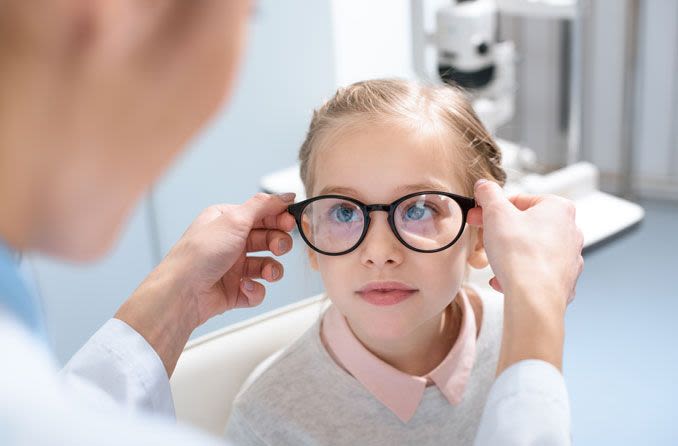Is nearsightedness genetic?

Many aspects of vision are genetic, including some of the risk for refractive error. And genetics definitely play a role in whether a child will develop myopia. A child with two shortsighted parents can have a six times greater risk of myopia than a child with no shortsighted parent.
In fact, researchers have found over 200 genes related to myopia and refractive error. Many of them were found very recently. A 2018 study uncovered 161 previously unknown genetic factors associated with nearsightedness.
But heredity is not the only factor in developing myopia.
The number of people with myopia is rising rapidly. Currently, more than one third of the world's population has myopia. The number is even higher in some East Asian countries, where at least 80% of young adults are shortsighted.
Researchers with the Brien Holden Vision Institute predict that more than half of people worldwide will have myopia by the year 2050. Genetics and heredity alone can't account for such a dramatic increase in shortsightedness.
However, environmental factors might be a large part of the answer. Specifically, people have been spending less time outdoors and more time staring at digital screens.
Shortsightedness is a refractive error, not an eye disease. It usually occurs because the eyeball grows too long from front to back during childhood. This is the eye's axial length.
If the eye is too long, light doesn’t come to a clear focus on the retina. This is why shortsighted people can see clearly up close, but distant objects look blurry.
Experts now believe that environmental factors can influence the development of myopia. The most important of these factors may be spending time outside in sunlight.
Sunlight stimulates the natural production of dopamine. Dopamine slows down growth in the axial length of the eyes, and too much axial growth can cause myopia. This means that more sun exposure can be a great tool to reduce a child's chances of developing myopia.
Another important factor is prolonged near work. Near work is any visual task that requires focusing up close, like reading. Other examples of near work are focusing on computer screens, tablets and smartphones.
There is growing evidence that prolonged near work increases the risk for myopia. Some studies have also found that prolonged near work may increase myopia progression.
The research linking near work to myopia progression in children is not conclusive. But it does suggest that near work activities outside of school should be done in moderation. Encouraging kids to take regular vision breaks during all near work could reduce their chances of myopia progression.
Myopia usually begins during childhood. If it is progressive myopia, it can continue to get worse until early adulthood. And often, children who are becoming shortsighted aren't aware their vision is declining.
To monitor your child's vision, schedule an eye examination at the beginning of each school year with an optician near you.
Early childhood refractive error and parental history of myopia as predictors of myopia. Investigative Ophthalmology & Visual Science. January 2010.
IMI – Myopia genetics report. Investigative Ophthalmology & Visual Science. February 2019.
Genome-wide association meta-analysis highlights light-induced signaling as a driver for refractive error. Nature Genetics. May 2018.
The increasing prevalence of myopia in junior high school students in the Haidian District of Beijing, China: a 10-year population-based survey. BMC Ophthalmology. June 2017.
Global prevalence of myopia and high myopia and temporal trends from 2000 through 2050. Ophthalmology. May 2016.
Myopia prevention and outdoor light intensity in a school-based cluster randomized trial. Ophthalmology. August 2018.
The association between near work activities and myopia in children—a systematic review and meta-analysis. PLOS ONE. October 2015.
Increased prevalence of myopia in the U.S. between 1971-1972 and 1999-2004. Archives of Ophthalmology. December 2009.
Page published on Friday, 28 June 2019
Page updated on Thursday, 15 June 2023
Medically reviewed on Thursday, 3 March 2022






